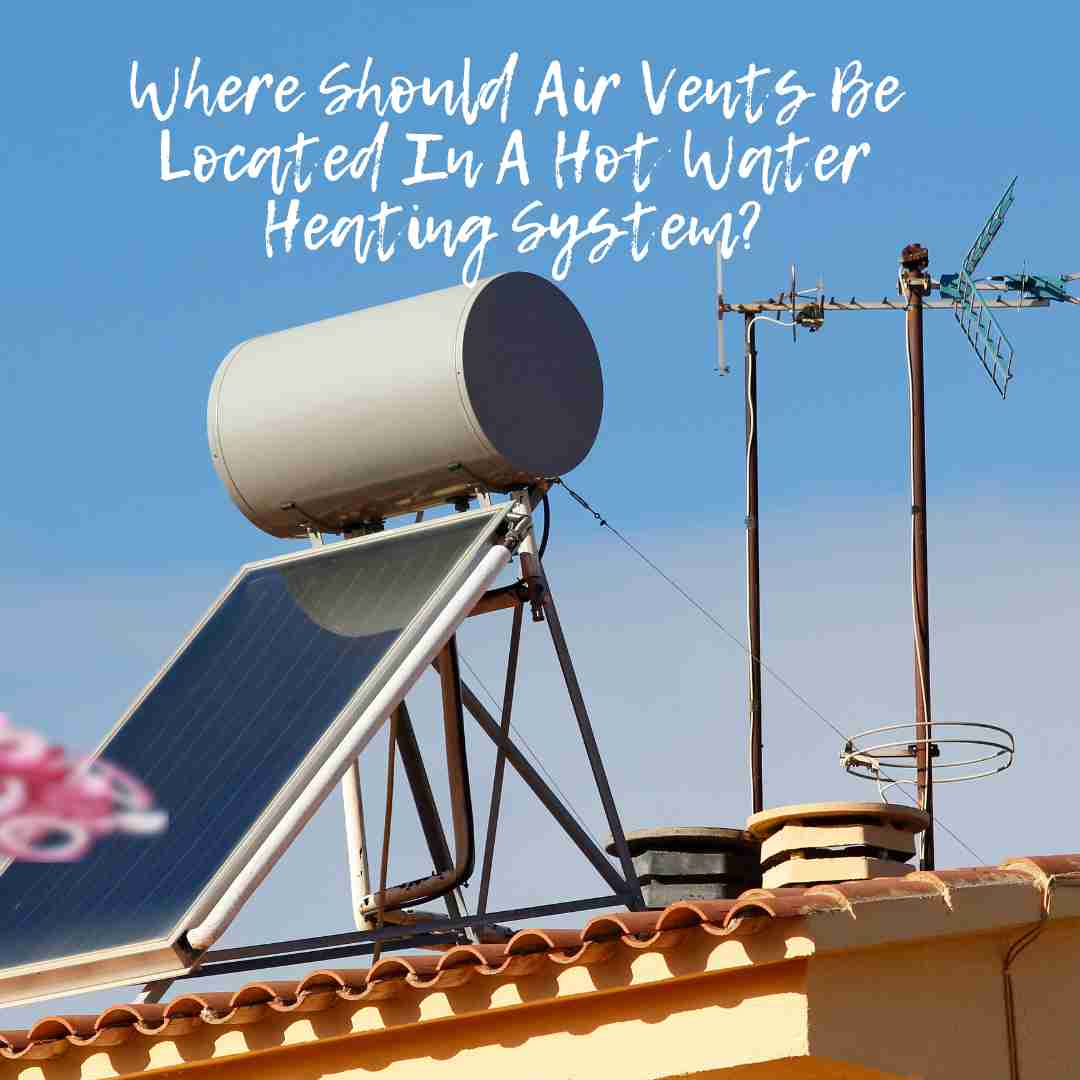Optimizing the performance of a hot water heating system relies on various components working seamlessly together, with air vents playing a critical role in maintaining efficiency and functionality.
Proper air vent placement is essential for ensuring the effective removal of trapped air, which can hinder heat transfer and compromise system performance. Fortunately, quality hot water system installation and repairs contribute significantly to achieving optimal air vent placement and overall system functionality.

This article determines where air vents should be in a hot water heating system, addressing factors like system design, pressure dynamics, accessibility, and safety.
The Role Of Air Vents
Air vents play a crucial role in water heating systems, especially in closed-loop systems like radiators or hydronic heating systems. Here's why air vents are important:
1. Air Removal
Air can get trapped in the system during installation or operation, especially when the system is first filled with water. Air pockets can hinder the flow of water and reduce the system's efficiency by preventing proper heat transfer. Air vents allow trapped air to escape, ensuring that water can circulate freely and efficiently.
2. Preventing Corrosion
Air pockets can lead to corrosion in the system, particularly in metallic components such as pipes, radiators, or boilers. This corrosion can cause leaks and reduce the lifespan of the system. By removing air, air vents help prevent corrosion and prolong the life of the equipment.
3. Maintaining System Efficiency
Efficient heat transfer relies on the continuous flow of water through the system. Air pockets disrupt this flow, reducing the system's efficiency and potentially causing uneven heating. Air vents help maintain optimal system performance by eliminating air pockets and allowing water to circulate freely.
4. Noise Reduction
Air trapped in the system can cause noises such as gurgling or banging as water flows through pipes and radiators. Air vents help reduce or eliminate these noises by ensuring that air is expelled from the system, resulting in quieter operation.
Ideal Locations For Air Vents
The ideal locations for air vents in water heating systems depend on the specific configuration of the system and the type of heating equipment being used. However, there are some general guidelines for where air vents should be installed:
Highest Points
Air naturally rises within the system, so air vents are typically installed at the highest points of the system where air tends to accumulate. This is often in the attic, upper floors, or near the top of vertical piping runs.
Near Pumps Or Boilers
Air vents may also be installed near pumps, boilers, or other primary heating equipment. This helps to remove air that may have accumulated in these components during operation or maintenance.
End Of Main Pipes
In hydronic heating systems with long horizontal piping runs, air vents are often installed at the end of main pipes or loops. This allows air that has migrated to the highest point of the system to be expelled efficiently.
Expansion Tanks
If the system includes an expansion tank, air vents may be installed near the tank to prevent air from accumulating and interfering with its operation.
Near Flow Obstructions
Air tends to collect at flow obstructions or high points in piping, such as elbows, tees, or valves. Installing air vents near these points can help ensure that trapped air is effectively removed from the system.
It's important to consult with a qualified HVAC technician or engineer when determining the specific locations for air vents in a water heating system. They can assess the system's design, layout, and operating conditions to determine the optimal placement of air vents for efficient and effective operation.
Factors To Consider
Several additional factors should be considered when determining the placement of air vents in water heating systems:
System Design
The layout and design of the heating system can influence the placement of air vents. Factors such as the number of zones, pipe routing, and the location of primary heating equipment should all be taken into account.
System Pressure
The pressure within the heating system can affect the performance of air vents. High-pressure zones or areas with significant pressure fluctuations may require special consideration when placing air vents to ensure they operate effectively.
System Load
The heating load and flow rates within different parts of the system can impact air vent placement. Areas with high flow rates or heating demand may require additional ventilation to ensure efficient air removal.
Accessibility
Air vents should be installed in locations that are easily accessible for inspection, maintenance, and servicing. Accessibility considerations include factors such as clearance for venting, proximity to service access points, and ease of reach for maintenance personnel.
Safety
Air vents should be installed in locations that minimize safety risks, such as exposure to high temperatures or physical hazards. Avoid placing air vents in areas where they may be damaged or obstructed by other equipment or building features.
Environmental Conditions
Consideration should be given to environmental conditions such as temperature variations, humidity levels, and exposure to moisture or corrosive substances. Air vents should be installed in locations that minimize the risk of damage or malfunction due to environmental factors.
Regulatory Requirements
Local building codes and regulations may dictate specific requirements for the installation of air vents in heating systems. It's important to ensure compliance with applicable codes and standards when determining air vent placement.
Takeaway
Strategic placement of air vents is vital for optimal performance and efficiency in hot water heating systems. By locating vents effectively, trapped air can be removed, ensuring reliable heat transfer and preventing system damage.
Considering factors like system pressure, accessibility, and safety is essential for long-term functionality. Adhering to best practices in air vent placement enhances system performance and overall comfort.
